From Doofus: “Re: Allscripts. Word on the street that Allscripts is sending a letter to Misys EMR clients stating that they will not make MISYS EMR compliant with ARRA guidelines and that these clients will need to move to the Allscripts family of products. Fees are in the area of $2,500 per provider and a fee per practice. Training and data conversion are not included but are discounted.” A contact there says word on the street is wrong. Since meaningful use hasn’t been defined, Allscripts hasn’t made any statement about the likelihood of MEMR being compliant or what they’ll do (or offer) if it isn’t. Maybe there was some confusion over an ongoing offer to those MEMR customers who would like to upgrade to one of the company’s better products at their convenience.
From Pat Patterson: “Re: HIStalk Practice. The last e-mail blast link takes you to the eClinicalWorks home page. PS – Tell Inga she is my ‘secret girlfriend’. I just love women who can talk tech and shoes all in one column!” Inga was scurrying to the airport and pasted the wrong link into the e-mail, leading Pat to joke that we must have sold the mailing list to eCW. She can definitely talk the girl stuff, to which I agree there’s nothing more attractive than a really smart woman who’s still fun. My secret girlfriend is Tina Fey since I’ve become a big 30 Rock fan. Love the glasses.
From The PACS Designer: “Re: InformationWeek Top 250. The latest rankings from InformationWeek’s Top 250 Innovators has been released with the following healthcare providers being amongst the top 25: #2 Cincinnati Children’s Hospital M. C., Marianne F. James, Sr. VP & CIO; #9 University of Pittsburgh M.C. (UPMC), Daniel S. Drawbaugh, Sr. VP & CIO; #18 Beth Israel Deaconess M.C., John D. Halamka,CIO; #21 Sentara Healthcare, Bertram S. Reese, Sr. VP & CIO; #22 Christus Health, George Conklin, Sr. VP & CIO; #23 University of Arkansas for Medical Sciences, Kari Cassel, CIO. TPD salutes these institutions for being tops in IT innovation!”
From Dr. Curious: “Re: Eclipsys. After reading the post about Eclipsys letting their consultants go and giving their implementation work to consulting partner, a huge red flag went off. In this year, they have replaced their CEO, CFO, and dismantled their professional services division. It makes me wonder if there is more to this than meets the eye. For example, could it be that they are preparing for a buyout, or are they struggling through financial difficulties? Everything I have seen and heard about Eclipsys points to a near-term end for them. What are your thoughts?” I suppose it was time to replace the CEO and CFO. Outsourcing the professional services organization is puzzling since theirs was pretty good, but it never seemed to make the money they expected it to, possibly because they don’t sell Sunrise all that often and that probably caused bench time (how else can you lose money billing out $50 an hour employees as $250 an hour consultants?) You may not have noticed that share price has made a steep climb up in the last six months, going from $8 to $20, which is highly positive given the company’s erratic financials in years past. Despite some impressive successes in clinical systems, they’re always going to be banging heads (usually unsuccessfully) with the Epic juggernaut since they have the same sweet spot, but Epic’s got everything else and not just the core doctor-nurse-pharmacist stuff. Positives: the former Premise, EPSi, and MediNotes, all good (but not cheap) acquisitions. Andy Eckert knew zip about healthcare, so I’d consider that a minus, as was the long roster of lackluster and revolving door VPs that served time there. OK, so now that I’ve brain-dumped, here’s what I think: excellent products, hopefully improved management, but sorely in need of a strategy that keeps them out of Epic’s way while earning the confidence of stock analysts. They need a Neal Patterson.
The rumored Eclipsys contractors, by the way, are Vitalize, ACS, and MaxIT. All fine companies, but as one reader said, it all rides on how Eclipsys manages them.
From Anomymously Happy to be Done with Epic: “Re: Epic. I find it really hard to believe that an office is such a perk, given that the employees actually working hard for Epic don’t spend more than three days a month in the office! And as you nicely put it, people become ‘untouchable’ when they leave Epic. They don’t truly try to LEGALLY enforce the non-compete, because they can’t! I was a team lead at Epic and you are ‘encouraged’ to set mutual end dates with your team members rather than fire them. These people are too naive to know that if they do set a mutual end date that they won’t be eligible for unemployment, etc. Mr. HIStalk, please don’t ‘Like their model as a capitalist!’ I feel really bad for new young people who think that Epic is a place to start their career!” I’ll have to disagree a little. Lots of those folks aren’t all that employable, so it’s a darned good job in comparison to their likely alternatives (and pays a lot more than Meditech without the Boston expense besides). The former employees who complain about the company are self-selecting, i.e. they left, so naturally they aren’t going to brag. The ultimate measure is employee turnover, a stat I don’t have.
From Dan: “Re: your doctor’s EMR. You are an experienced observer and your comments are welcome, but we could all use the context of the make to put it all into some perspective.” I hinted around to my doc, but he never came out and said whose product it was and, surprisingly, I didn’t see its name on the screen. I was thinking GE, but that might have been another doc that I’m recalling. He mentioned McKesson, but he was tying into some hospital information, too, so I don’t know which system he was talking about. I don’t know that there was anything all that special about the EMR anyway, but I was impressed with how he integrated it into his practice.
From RIS Reporter: “Re: Kindred. The Radiology Information System unexpectedly went down at more than half of all Kindred LTAC hospitals in the US. Current radiographs were unavailable for interpretation or view for hours. That would not be so bad, except that Kindred harbors hundreds of train wreck patients.” Unverified.

An Ohio hospital employee opens a personal e-mail from a former boyfriend using Yahoo Mail on a hospital PC, surely violating a number of IT security policies. The e-mail had been intentionally infected with a $115 commercially available program that sends all keystrokes and a regular series of screen images to a designated party (the former boyfriend in this case). He not only got 1,000 screen captures loaded with patient and employee information, he also was the recipient of up to five years in jail and a bill for the hospital’s trouble in the amount of $33,000. A quoted security expert was mildly sympathetic to the hospital, but questioned how they allowed it to happen.
Weird News Andy finds this odd but not humorous story: a patient dies six days after she is somehow set on fire during surgery in an Illinois hospital.
![ahn_thumb[2] ahn_thumb[2]](http://histalk2.com/wp-content/uploads/2009/09/ahn_thumb2.png)
Alliance Health Network, which runs disease-specific patient social networks used by vendors of related products and services to try to sell them stuff, raises $3.3 million in Series C funding, raising its total to $6.6 million.
University of Missouri big wheels meet behind closed doors with “several unidentified men”, leading to speculation by 100 IT employees that their jobs are about to be outsourced to Cerner. One was quoted as saying, “The workplace is miserable. We come in every day not knowing if we’re going to have a job in five months,” which means nothing much would change if CERN takes over. The suits got careless, apparently, with the CIO letting slip the never-heard term Tiger Partnership in referring to the Cerner relationship and another executive denying a newspaper’s open records requests with the excuse that pending contract discussions are exempt, then saying “we’re done here” when he realized that he had just let the cat out of the bag by acknowledging that the Cerner correspondence involved a contract.
Edgefield Hospital (SC) signs for Swearingen Software’s RISynergy RIS. I didn’t know Randall was still selling, to be honest. Great product, but the “what if he gets hit by a bus” question always came up when we considered it at places I’ve worked, even though we all liked it. I like their Web site, in which the first menu item to the left of the standard About Us is one called About You, which is fun.

UC Irvine acknowledges that CMS nailed it with an “immediate jeopardy” warning earlier this summer, the result of a California Nurses Association complaint that faulty PCA pumps were overdosing patients. Ironically, the CMS found that the pumps were fine and it was nurse errors that caused the overdoses, one of which happened while the inspectors were on site. I’m guessing the rather radical and pro-union CNA quieted down the mad-dog rhetoric a bit on hearing the nurses were at fault like the hospital said all along.
Revenue cycle management vendor Passport Health Communication hires former Cerner VP Seth Rupp as CTO.
Medicity is offering a Webinar next Friday called On the Leading Edge of Meaningful Use: HIE in the State of Delaware.
Listening: new from Muse, dramatic and theatrical orchestral progressive. They even sound kickin’ live — a little Uriah Heep, a little Queen, a little U2 (by my untrained ear). I’m surprised that they’re #6 on Amazon and they have 63 million MySpace plays. Like it lots, although I wish they were more obscure so I could feel smug about finding them by accident.
Our sponsor friends at Culbert Healthcare Solutions redesigned their Web site with a lot of highlights listed for some of their practice areas (Allscripts, Epic, GE/IDX, revenue cycle, etc.) I have to admit that I didn’t know they did as much as they do – workflow, EHR, RCM, interim management, and systems integration. Business must be good because they’re looking for consultants, I noticed.
National coordinator David Blumenthal tells an AHRQ audience that nobody’s done enough research to really know how to implement EMRs, saying “one thing we haven’t done is apply the scientific method in the practice of healthcare and medicine.” So in other words, if EMRs were drugs, FDA wouldn’t allow them to be sold, especially $19 billion worth of taxpayer expense. I’m feeling really good about HITECH right about now. I’m being facetious, but the problem with studying technology implementation is that, unlike drugs and devices, the technology is just a reliable extender of unreliable human variation. Hospitals are run like mom-and-pop shops when it comes to repeatable processes, with a massive variation between what administration decrees and what the front-liners actually do in the uncarpeted areas of the hospital. It would be unenlightening, as well as unfair, to hold the technology accountable for any change in outcomes (good or bad). This makes probably the thousandth time I’ve said this, but here I go again: if you are really good (personally or organizationally), healthcare IT has the potential make you a little bit better. If you aren’t very good, your level of suckitude will be unchanged or very likely will increase when you throw technology into the mix.
Rwanda will implement the Jeeva system in all hospitals next year. A little Googling turned up its vendor, India-based Karishma, which focuses mostly on East Africa, Southeast Asia, and the Middle East, but which lists the USA as its #4 market, with partners IBM, Intel, and Oracle and a US office in Virginia. They offer every kind of system that a hospital would need from what I can tell. The clinical decision support system sounds really cool. This might be a company to watch.
Henry Ford Health System chooses Apollo PACS.
A stock analyst says newly public Emdeon is a “melting platform” whose clearinghouse business is threatened by new competitors (athenahealth) and HIEs, speculating that providers will bypass clearinghouses and simply submit claims directly to payors. You don’t often see a new issue getting a “sell” rating.
I’m behind again, so be patient if you’ve e-mailed. We’ve got some good stuff coming, but it takes more time than you might think. I love every minute, but there just aren’t enough of them available.
![bangkok_thumb[2] bangkok_thumb[2]](http://histalk2.com/wp-content/uploads/2009/09/bangkok_thumb2.png)
Seventeen Bangkok hospitals will use a single EMR, with one benefit being the ability to attract medical tourists. IBM is involved.
You have to like the name of this long-term care physician system: PAR 3 EMR.
Sharp HealthCare is the subject of a press release by ColdFusion Web framework / content management vendor PaperThin, which says the health system redeveloped all its Intranet and Internet pages using its CommonSpot CMS.
North Carolina wants $40 million of federal money to build an HIE, $20-30 million to hire 40 employees for nine regional extension centers, and $28 million for a broadband network for medical images.
National Library of Medicine launches the Newborn Screening Coding and Terminology Guide, intended to help states move forward with common standards for including newborn screening information in EMRs.
Children’s National Medical Center (DC) gets a $150 million donation from the government of Abu Dhabi to create the Sheikh Zayed Institute for Pediatric Surgical Innovation.
E-mail me.
HERtalk by Inga

From: Miss Manager “Re: Epic prepares for a Wild, Wild UGM. Please share fashion tips for western wear, thank you!” Miss Manager sent over this link to the Verona paper detailing Epic’s user group meeting next week, which features a Wild, Wild West theme. First, I am so glad Miss Manager inquired about fashion, since I know far more about that than I do the Epic software. Obviously, boots are a must. I have some adorable Steve Maddens with spurs, so I am bummed I wasn’t invited to attend. Other than that, you can never go wrong with lots of rhinestones and studs. For those of you more focused on HIT than fashion, here are some interesting details to note. Epic is foregoing a traditional keynote speaker, choosing to “not go overboard” in light of the poor economy. The company is offering “recession pricing” of $300 per person, versus the last year’s $600 fee. Expected attendance is 3,000 plus the company’s 3,400 staff. Needless to say, the area’s 2,500 hotel rooms are going fast, and the Super 8 and Holiday Inn Express are already booked.
3M Health Information Systems releases a new application to covert ICD-9 based applications to IC-10.
JPS Health Network (TX) selects Order Optimizer as its evidence-based order set and clinical decision support platform.
I’d love to know who wrote this. Maybe it was Mr. H himself.

Ochsner Health Systems (LA) goes live on DocuSys Anesthesia Information Management and Anesthesia Drug Management at its 41 anesthetizing locations.
Lots of apologies in the media these days: Joe Wilson, Kanye West, Serena Williams. Now Cleveland Clinic’s CEO also says he’s sorry if his recent comments on obesity caused any offense. Could Mr. H also be trying to make amends with the disabled after he recently accused the elderly of wasting government money on free scooters?
CliniComp names Stephen Armstrong VP of marketing. Armstrong is former VP of marketing and founding executive of Patient Care Technology Systems.
EHRtv.com posts 40 videos from the Allscripts Client Experience, including Glen Tullman’s keynote address and several client interviews.
Healthcare analytics company MedAssurant acquires fellow analytics vendor Catalyst Technologies. The merger creates the country’s largest company providing administrative and hybrid medical record data review and analysis.

Methodist Health System (TX) agrees to implement Webmedx’s Transcription Outsourcing Service and Enterprise software solution. The system will interface with Methodist’s EHR.
I understand that pharmacies would prefer you hang up the cell phone and talk to the pharmacist when picking up your meds. However, I think this Illinois CVS pharmacy is stretching the truth a bit with its posted signs claiming they’re unable to help customers on cell phones “due to HIPAA regulations.”
The Minnesota HIE is named a finalist for a Minnesota High Tech Association 2009 Tekne Award. The HIE is up for the Innovative Collaboration of the Year award.
The Premier healthcare alliance becomes the first group-purchasing organization to contract with AirStrip Technologies. The AirstripOB product provides providers real-time remote access to such data as maternal contractions and fetal heart rates.
Streamline Health announces its Q2 numbers: $18K loss, compared to a $429K loss last year; quarterly revenue fell 16% to $4.1 million, compared to $4.9 million in 2008.
St. Vincent Health (IN) expands it use of MedAssets’ RCM products to improve contract management, charge capture ad recovery, and claims management.
Adventist Health System signs up to implement Dolvey Systems’ computer-assisted coding solution. Fusion CAC will be installed in Adventist’s 33 hospitals to enhance both the inpatient and outpatient coding process.
Sentara Healthcare moves a fifth hospital to Epic’s EHR with its recent go-live at Sentara Williamsburg (VA.) Sentara is investing over $230 million in the project for its seven acute care facilities and 380 clinics.
Novant Health plans to roll out MEDai’s PinPoint Review predictive modeling solution across its nine hospitals. Novant will use the tool to identify and manage its inpatient populations while patients are still in the hospital.
Here’s some promising news: at last week’s HITSP board meeting, committee chairman Dr. John Halamka predicted the cost of developing health data exchanges are likely to fall as providers begin adopting standards. Halamka is betting that interfaces that today might cost $20,000 to $30,000 might in time fall to $5,000 to $10,000.

E-mail Inga.









![ahn_thumb[2] ahn_thumb[2]](http://histalk2.com/wp-content/uploads/2009/09/ahn_thumb2.png)

![bangkok_thumb[2] bangkok_thumb[2]](http://histalk2.com/wp-content/uploads/2009/09/bangkok_thumb2.png)




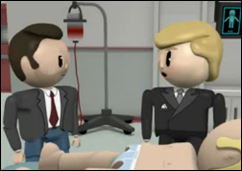










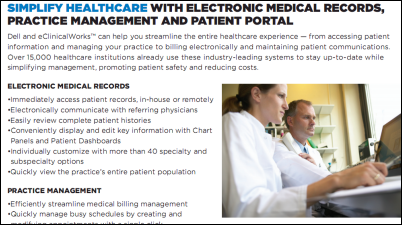



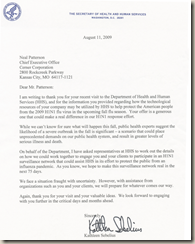




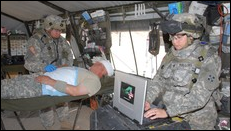














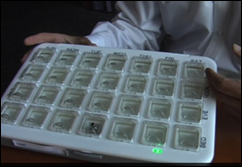



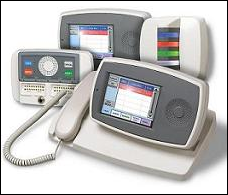
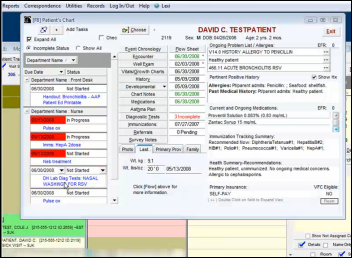




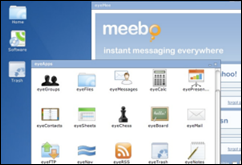













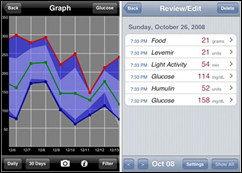












"A valid concern..." Oh please. Everyone picks the software they like and the origin of that software is an afterthought.…